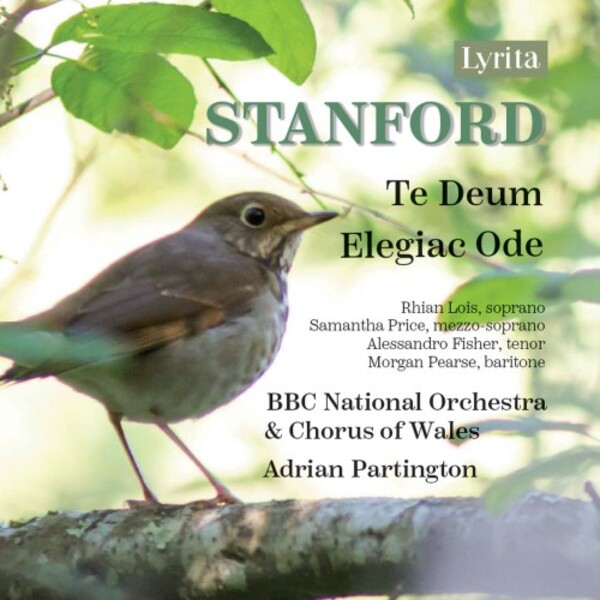
Stanford - Te Deum, Elegiac Ode
£13.25
Despatch Information
This despatch estimate is based on information from both our own stock and the UK supplier's stock.
If ordering multiple items, we will aim to send everything together so the longest despatch estimate will apply to the complete order.
If you would rather receive certain items more quickly, please place them on a separate order.
If any unexpected delays occur, we will keep you informed of progress via email and not allow other items on the order to be held up.
If you would prefer to receive everything together regardless of any delay, please let us know via email.
Pre-orders will be despatched as close as possible to the release date.
Label: Lyrita
Cat No: SRCD435
Format: CD
Number of Discs: 1
Genre: Vocal/Choral
Expected Release Date: 5th July 2024
Contents
Artists
Rhian Lois (soprano)Samantha Price (mezzo-soprano)
Morgan Pearse (baritone)
BBC National Orchestra & Chorus of Wales
Conductor
Adrian PartingtonWorks
Elegiac Ode, op.21Te Deum, op.66
Artists
Rhian Lois (soprano)Samantha Price (mezzo-soprano)
Morgan Pearse (baritone)
BBC National Orchestra & Chorus of Wales
Conductor
Adrian PartingtonAbout
Stanford’s large-scale setting of the Te Deum, op.66, was first sung at the Leeds Festival on 6 October 1898 and its ambitious, opulent dimensions were clearly intended to be a fitting commemoration of the accession to the throne of Queen Victoria (its dedicatee) sixty years earlier as well as a tribute to the full-bodied, well-trained Leeds chorus of 350 singers. A particular feature of the Te Deum is the grandeur of much of its choral writing. Though also dramatic in its impact, a dominating feature of the Te Deum is its prominent use of the chorus, and the many fulsome sonorities Stanford was able to draw from the magnificent ‘instrument’ of the Leeds voices.
Error on this page? Let us know here
Need more information on this product? Click here